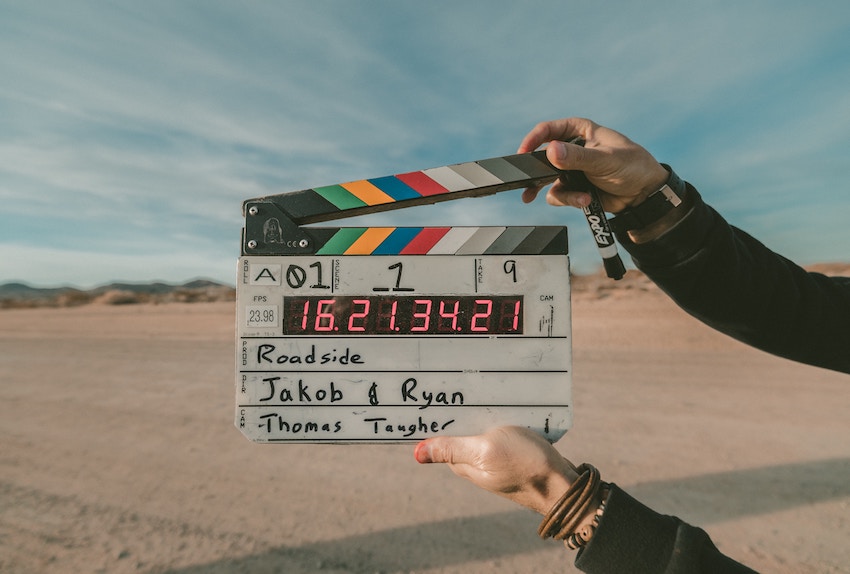Being in sales is no easy job.
Sometimes, it feels like a career full of being one of many suitors trying to impress the fairest princess in all the land...that doesn't want to get married in the first place. Other times, it feels like you caught a huge fish...just to have the line break right before reeling it in.
No matter how you want to envision it, the truth is that one of the most difficult aspects of being a salesperson is closing the best deal while preserving speed and efficiency.
Though it would seem like the best answer from a prospect is always “yes,” I’m going to argue that, when a prospect takes forever to close a deal, you’re actually better off getting a faster response, even if it’s a “no.”
Let’s elaborate this counterintuitive idea further by covering:
What everyone wants

MarketingSherpa found that 57% of B2B organizations identify “converting qualified leads into paying customers” as a top funnel priority.
And with that, everyone wants the ideal: to accelerate the sales cycle while simultaneously building trust and a strong and close relationship with the prospect.
It sounds daunting, borderline impossible, but it’s not - it just means you shouldn’t jump right from the first point of contact to your sales pitch.
Besides, it’s important to acknowledge that the ideal length of a sale can differ vastly based on industry, client, and circumstance.
The reality of sales cycle lengths

Retail stores and coffee shops, for instance, have an extremely short sale length as most consumers go into the shop expecting to buy something - it’s usually a matter of finding the right garment or flavor of coffee that causes minor hesitation at most.
On the flipside, buying a house or a car takes significantly longer, as there are a lot of factors to consider when purchasing something so long-term and pricy.
To put it simply, most things with a contract or high price tag take longer than the small stuff.
Which means, if you’re selling something with higher stakes, it’s imperative that you build a strong relationship with your long-term (and highly valuable) prospects.
So, which is better?

Typically, a short sales cycle is better simply because you can meet with more prospects in shorter pursuits than in one long pursuit, which means you can make more money if you close more deals in that same amount of time.
Also, in longer sales cycles, you risk the chance of the prospect starting to forget the details or withdrawing their initial decision.
They also have a longer period of time to scrutinize your company during the whole process, which means your business cannot slip up whatsoever to avoid risking the loss of a potential customer.
If your company somehow makes a bad impression on the prospect during the pursuit, you can kiss that opportunity goodbye.
On the other hand, the longer the sales cycle, the larger the investment.
Though this does come with some risk, closing a huge deal means that the energy and resources that went into pursuing the lead were well worth it.
Consider that…
- Nurtured leads make 47% larger purchases. (Marketo)
- Nurtured leads produce, on average, a 20% increase in sales opportunities versus non-nurtured leads. (Demand Gen Report, 2014)
Large projects take a lot of decision-making, stakeholders, effort, and time, but are worth a lot more money than small projects.
Even so, the stakes are higher - the loss is bigger if you don’t close - and there is more room for objections to the deal, too.
It’s important to recognize that not every opportunity is a guaranteed sale, so you absolutely must make sure you’re in contact with the right people to be making a decision.
Instead of selling to a lower-level employee who promises to get you C-suite buy-in (“I got this; just trust me”), aim for higher-up prospects that are the decision-makers, or at least the decision-influencers.
If you bet on the wrong horse, so to speak, you can end up wasting a monumental amount of time.
The amount of effort that goes into the pursuit of leads is another factor to consider.
With a short sales cycle, the sales team takes some time to research, contact, and pitch to a lead, then start the sequence over with the next lead.
With a long sales cycle and a very large, important deal, the salesperson gets more involved: it’s best to help coach the prospect in determining how to manage the decisions that need to be made and relationships that need to be managed in order to get the deal to close smoothly.
Not every deal is closed in sales, unfortunately, and there are many factors that can hinder the sale that are out of the salesperson’s control.
Things that could be getting in the way of closing

First off, there are two types of prospects: the “now responders” and the “later responders.”
You want a quick response, naturally, but there’s only so much you can do to get it from the folks who chronically put everything off until later, then even later...until they change their mind.
Try to encourage prospects to say “no” if they don’t want what you’re selling instead of pressuring them into a weak “maybe” and wasting everyone’s time.
Some people just can’t say no for a whole assortment of reasons: they’re too nice, don’t want any awkwardness or hurt feelings, have a FOMO (fear of missing out) and therefore can’t let the possibility go yet, mull over the “what if…” - and so on.
Tell those prospects that it’s okay to say no, because if they don’t have a clear goal for the purchase, their answer isn’t strong enough and therefore is not a strong lead for you - and isn’t worth pursuing further.
Another obstacle slowing down the sales cycle could be the internal sales process and technology of your company: if it’s not streamlined enough, the process could jeopardize the deal because it simply takes too long to close.
InsideSales found that the average sales rep spent up to 4 hours per day sending email, following up on calls, sending faxes, and other administrative activities, which can be reduced using templates and automation. In one case, the time to create a proposal was reduced from 45 to 2 minutes by implementing a template.
That’s a huge difference in the long run!
Proactivity and personalization are important, too, as the role of the sales team is to provide prospects with absolutely everything they need to fully analyze the situation to make a faster and well-thought-out purchase decision.
A great way to do this is to take a look at the prospect’s first interaction with your business, then cater the sales pitch to them based on what you’ve learned.
Otherwise, if they’re not even remotely close to purchasing, nurture the lead if they’re in the top of the funnel and gently - and helpfully - guide them toward the purchase goal.
Two things to remember along the way: don’t put pressure on the lead, and personalize their journey all the way for the best chance of closing the deal.
What I believe is the key hindrance in converting a lead to a client is a lack of a solid vetting process. Save yourself time by pursuing only the best leads: identify it there’s any chance of a sale early on, then dismiss the weaker leads to focus more energy on the likely closers.
I downloaded a free ebook from a company one single time, and they have been pursuing me for years as a result. What’s worse, I needed the ebook to learn about marketing on a lower level of the company I worked for, where I did not make a single purchase decision as part of my role.
As a result, I ignored every single voicemail and email that they have sent my way, meaning that their sales team has been putting in some amount of effort to convert someone who has no intention of buying anything at all.
That, my friends, is a waste.
Instead of determining how you can close right off the bat, first identify if you can close: if there are reasons that’ll lead to success, it’s a hopeful lead.
If no solid reasons can be identified, it’s hopeless; move on.
Create a plan and criteria for pursuit or abandonment: ask the prospect plenty of questions, do research, and get a sense of the prospect’s buying process.
The more you refine your prospects at the outset, the more likely you are to close the deal.
So...how can you reduce the hurdles and speed up the sales cycle?
Getting a fast “no” or “yes” requires fast action

Let’s examine some facts:
- There’s a 10x drop-off in lead qualification when you wait longer than 5 minutes to respond, and a 400% decrease when you respond within 10 minutes compared to 5. (HBR x Insidesales)
- In a study of 1.25 million sales leads across 42 companies, leads that were contacted within an hour were 7 times more likely to qualify the lead as those that tried just 1 hour later, and 60 times more likely than companies that waited 24 hours or longer. (HBR)
If you want to grab the lead while it’s hot, you must act fast. Just look at the numbers above; the differences in time-to-likelihood of converting are staggering.
But, are there other ways in which you can guarantee a fast response? Our CEO and Co-Founder, Chad, weighs in with some tips:
1. People would rather avoid confrontation if possible.
So, to make the prospect comfortable with the idea of potentially saying no, kick off the very first meeting with some reassurance: “if we’re not a good fit for your needs, it’s okay - just let me know.”
This tells them that it’s okay to say what they really think; your feelings will be left unhurt. It also serves as a gentle reminder: either way is fine, just tell me sooner rather than later.
2. A good salesperson knows her ideal customer like the back of her hand.
So, while a prospect is learning everything he can about you, make sure to do the same: learn everything you need to know about him in order to assess whether he’s the right kind of customer for you.
You should have a concrete list, either mental or physical, that has key criteria of an ideal customer; that way, if you find yourself crossing more than 5 list items off, you already know to give up and move on.
This saves you and the prospect time and helps objectively assess whether or not the sale is worth it - or even feasible.
Chad’s final bit of advice is about how you should be treating leads in large-scale sales to get the best possible chance of closing the deal:
“Do everything you can to empower your champion within the company and help them introduce the idea of working with you to their boss.”
Chad coleman
To drive the point home, let’s take a look at some statistics that show how getting a fast “no” is actually better than a slow, dragged-out “yes” that could even turn out to be no more than a “maybe someday.”
The Argument for Fast “No”s
Less Time is wasted pursuing people who aren’t ready to purchase

- 34% of salespeople say closing deals is getting harder. (Hubspot, 2016)
- At the end of the month, reps appear to be pushing deals that are not ready: there is a 2.90 times increase in the number of deals closed at the end of the month, but there’s also an 11.43 times increase in the number of deals lost. (Insidesales, 2017)
- 80% of sales require 5 follow-up phone calls after the meeting. (Marketing Donut)
- 63% of people requesting information on your company today will not purchase for at least 3 months - and 20% will take more than 12 months to buy. (Marketing Donut)
- 50% of leads are qualified but not yet ready to buy. (Gleanster Research)
- At any given time, only 3% of your market is actively buying, 56% are not ready, and 40% are poised to begin. (Vorsight)
- 79% of all marketing leads are never converted to sales. (Pardot)
Now, all of the statistics above paint the picture of excessive pursuit of unqualified leads, and it’s not necessarily the sales team’s fault.
They have a tough crowd to deal with as consumers become increasingly informed on and careful with their purchases.
The faster you can get someone to give you an answer, the more time you can focus on more high-quality, ready-to-buy leads.
There are a lot of resources that go into sales, which means they need to be used wisely. That’s why, with a fast “no”...
Fewer resources are wasted, yielding a better ROI (return on investment)

- Lost sales productivity and wasted marketing budget costs companies at least $1 trillion a year. (The B2B Lead)
- 50% of sales time is wasted on unproductive prospecting. (The B2B Lead)
- Corporate spend on online lead generation went from $12.5 billion in 2005 to $22.7 billion in 2009. (HBR)
- 15% of every sales reps’ time is simply leaving voicemails. 80% of calls go to voicemail, and 90% of first-time voicemails are never returned. (RingLead)
- A team of 50 sales reps leave about 1,277 hours of voicemails per month. (RingDNA)
- An outside sales call costs $308; an inside sales call costs $50. (PointClear)
- The average salesperson makes 8 dials per hour and prospects for 6.25 hours to set up 1 appointment. (Ovation Sales Group)
- 88% of missed opportunities were caused because sales couldn’t find or leverage internal resources. (Qvidian)
- 80% of marketers report their lead generation efforts are only slightly or somewhat effective. (BrightTALK 2015)
- Across 355 leading B2B sales teams, sales development reps who make 12 contact attempts (instead of the average 8) perform 16% better. (The Bridge Group)
As more time goes by, more risk, costs, labor, and energy get used up.
Based on the above statistics, a lot of waste happens with the pursuit of leads, though that’s part of the problem with the state of sales today.
The best bet for saving some of those precious resources is to minimize lead pursuit to only the most qualified, and then take that extra time to find even better leads and refine your list further.
I believe an enforced quota is detrimental too, as it pressures the sales team to get as many people in the funnel as possible, bad or good, rather than selecting the prime few.
The Bottom Line
With a combination of refining lead quality, personalizing the prospect’s experience, and capping lead pursuit to a reasonable time frame, I believe that you could increase your lead conversion while decreasing the waste that is a result of pursuing leads.
And there’s no better way to cut down on some resources than reducing the length of the sales cycle by encouraging a fast response from prospects, which is why it’s that much better to get a fast “no” than a slow “yes.”
Do you have any tips on getting a faster, more confident reply from prospects?
Please share with us below!




